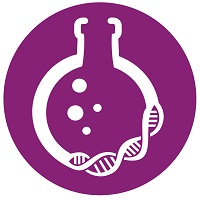Bioanalytics
Symposium: Biomarker, Platform and Support
Bioanalytical Assays for Gene Therapy Shedding Studies: Platforms and Validation
Tuesday, November 11, 2025
9:00 AM - 9:30 AM CT
Location: 221 AB

Amanda L. Hays, PhD
Scientific Officer
BioAgilytix
Overland Park, Kansas
Speaker(s)
In AAV-based gene therapy, shedding refers to the release of vector DNA or particles into bodily fluids or secreta and excreta of the treated subjects and patients. As a key safety assessment in clinical studies, shedding of viral vectors in biofluids can indicate a risk of transmission to non-study subjects and the environment. Outside of a comprehensive strategy for shedding study design to support clinical development of AAV-based gene therapy, which will be discussed in an accompanying symposium session, there is a need for bioanalytical assays that are used to measure shed vector in patient samples. Based on the design and nature of the assay readout, shedding assays can vary greatly in their performance and suitability. The choice of a shedding assay can greatly affect the quality of the data collected and is important in the generation of meaningful shedding data that provides a complete shedding profile for a product that can be used to estimate the potential for transmission. Typically, in the AAV gene therapy space, these shedding assays are developed on quantitative PCR (qPCR) or digital PCR (dPCR) platforms. Both platforms are utilized for their quantitative nature, high throughput capabilities, they offer rapid result turnaround and are sensitive platforms. This presentation will address various aspects related to developing assays for quantifying shedding vector in study samples, including platform selections, method development and validation considerations, as well as understanding assay sensitivity in qPCR for viral shedding assays.
Learning Objectives:
- Upon completion of, participants will be able to understand relevant platforms for shedding assays.
- Upon completion of, participants will be able to gain knowledge on method development and validation considerations for shedding assays.
- Upon completion of, participants will be able to appreciate the assay requirements needed to support shedding studies.

